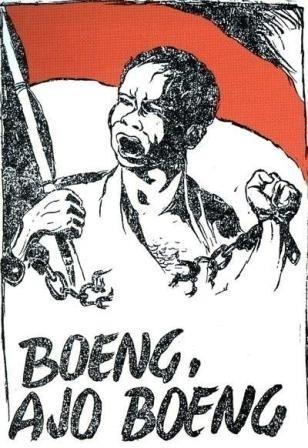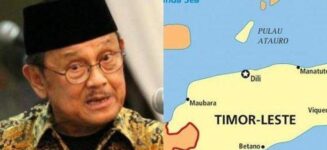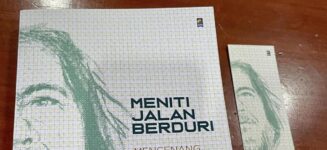The Jakarta Post, Wednesday, July 11, 2007
State responses and the row over flag incidents in Maluku and Papua suggest little has been learned from Indonesia’s rich experience with conflicts in East Timor and Aceh.
Some 60 years ago Ibu Soed, one of Indonesia’s most respected nationalists who composed the popular song Berkibarlah Benderaku (Fly My Flag), captured the significance that could emanate from the symbolism of a flag for an independence struggle and its meaning for nationhood. Her lyrics went: “Fly, fly my flag, the symbol of holiness, heroism and courage.” (Berkibarlah benderaku, lambang suci, gagah perwira ….)
A flag can even be intimately linked to blood, another powerful symbol of common cause, since only by political struggle, including physical fighting, can the ideal of nationhood be achieved — as was the case with Indonesia and many other nations. Thus a flag can represent powerful national identities and aspirations.
However, not every use of a flag can be assumed to have such profound significance. For flag symbolism to be able to have such powerful meaning, it obviously has to inspire a common cause. A flag, in short, is an instrument of collective imagining.
In other words, some idea of nationhood has to be rooted first in the collective consciousness of the group that feels symbolically represented by the flag. But the symbol can only be effectively used, exercised and manipulated as long as the group is able to provide some real infrastructure of nationhood, i.e. political leadership, organization, networks and resources.
It’s doubtful, though, that these aspects can be inferred from the simple flag flying attempt before the presidential entourage that happened in Ambon recently.
The so-called RMS (South Maluku Republic) has long ago ceased to exist as an effective political body, both in Maluku and in the Netherlands, where a few thousand of its supporters have lived since the early 1950s.
A half century on, thanks to the Dutch’s false promise, the RMS legacy in Holland has been transformed from political diaspora to settled, peaceful, law-abiding migrants. Meanwhile there is little evidence that the FKM, Forum of Maluku’s Sovereignty, reportedly associated with the RMS, has taken root in Maluku.
Quite the opposite has been the case with Papua and Aceh, as past incidents, war and violence demonstrated. Typically in both places the rebel movements rejected being marked as “separatists”, denying that they legitimately originated from or have ever been part of the republic against which they rebelled.
The groups’ ethnic perspective was further strengthened as both their hymns and flags were partly associated with religious sentiments; Christian-inspired lyrics and the Bintang Kejora flag for Papua and the Islamic crescent and the adzan (call for prayer) for Aceh.
Yet in both cases the flag symbolism did not always lead to panic responses and the blame game among the authorities, as with the RMS’s Benang Raja flag incident recently. It’s important to remember that the flag issue was once resolved by then president Abdurrachman “Gus Dur” Wahid’s instruction in 2000 to consider the flag a cultural symbol devoid of any political implications.
This is why in Papua — and the current authorities should have been aware of this — the local customary council MRP (Papuan People’s Council) and the local parliament have since been allowed to use the Bintang Kejora symbol.
In the case of Aceh, it’s instructive to recall how the dangerous stand-off between the central military leaders and GAM (Free Aceh Movement) on the matter of GAM flag raising was resolved in late-1999.
The issue came to a head as GAM planned to commemorate its anniversary on Dec. 4. As the date drew closer and president Wahid rejected a military emergency suggested by then military chief Gen. Wiranto, the Army top brass was evidently in a panic and threatened to prohibit the GAM flag raising.
A behind the scenes dialog bore fruit as GAM commander the late Abdullah Syafei’s message urging the public not to raise the flag was responded to with a reconciliatory call by the then local troika, governor Mahmud Syamsuddin, local military chief Col. Syarifuddin Tippe and local police chief Manggaberani, who allowed the raising of the GAM flag except at government offices.
Without this, blood would have spilled in Pidie, North and East Aceh, where many people, this writer recalls, celebrated the day with GAM flags. Thus, although Jakarta lost the political battle, compromise and dialog at some level were clearly possible.
Nationalist hardliners might argue it was precisely such tolerance and implied weakness that led to the Aceh war. Nonsense. In fact, that compromise contributed to a better climate and led to the first dialog between the government and GAM in early 2000.
Needless to say the case of Maluku, and Papua for that matter, is very different from that of Aceh. But state-sponsored nationalism — sometimes termed “black nationalism” — tends to aggressively swallow growing nationalism in the regions of the periphery — this has been demonstrated by the cases of Serbs versus Bosnia and Croats, Russia versus Chechnya, but also Indonesia versus Papua, Aceh and East Timor. Now one symptom is already visible, as following the Maluku incident one retired general in an exaggerated fashion warned that “Kalimantan and Sulawesi are ready to quit the republic”.
However, most worrying with Maluku, perhaps, is not an emerging local nationalism, but the rise of the RMS myth that may easily be manipulated by local interests by linking it to religious rivalry and sectarianism in the region.
It has been demonstrated that the bloody conflict in Ambon and Central Sulawesi in recent years has been aggravated by associating the RMS with one religious group allegedly supporting separatism. The historic truth, though, is that the RMS was from its very inception a Dutch patronized aspiration supported by both Christians and Muslims.
Just two days after the flag incident, one local paper, Harian Fajar, complained that the incident was handled softly compared to other cases. One political party, the PKS, even compared, with deep regret, the incomparable case of Abu Dujana’s arrest and the “relaxed” hunting of alleged RMS supporters.
Some hardliners apparently want “to maintain the full integration of the unitary state” with panic and warning myths rather than by winning hearts and minds with a human face.
The author is a journalist with Radio Netherlands.
The article was first published in The Jakarta Post, July 17, 2007; also in http://www.etan.org/et2007/july/14/11flag.htm and in https://superhalaman.wordpress.com/2007/07/10/aboeprijadi-santoso-flag-politics-and-the-fallacy-of-separatism/



